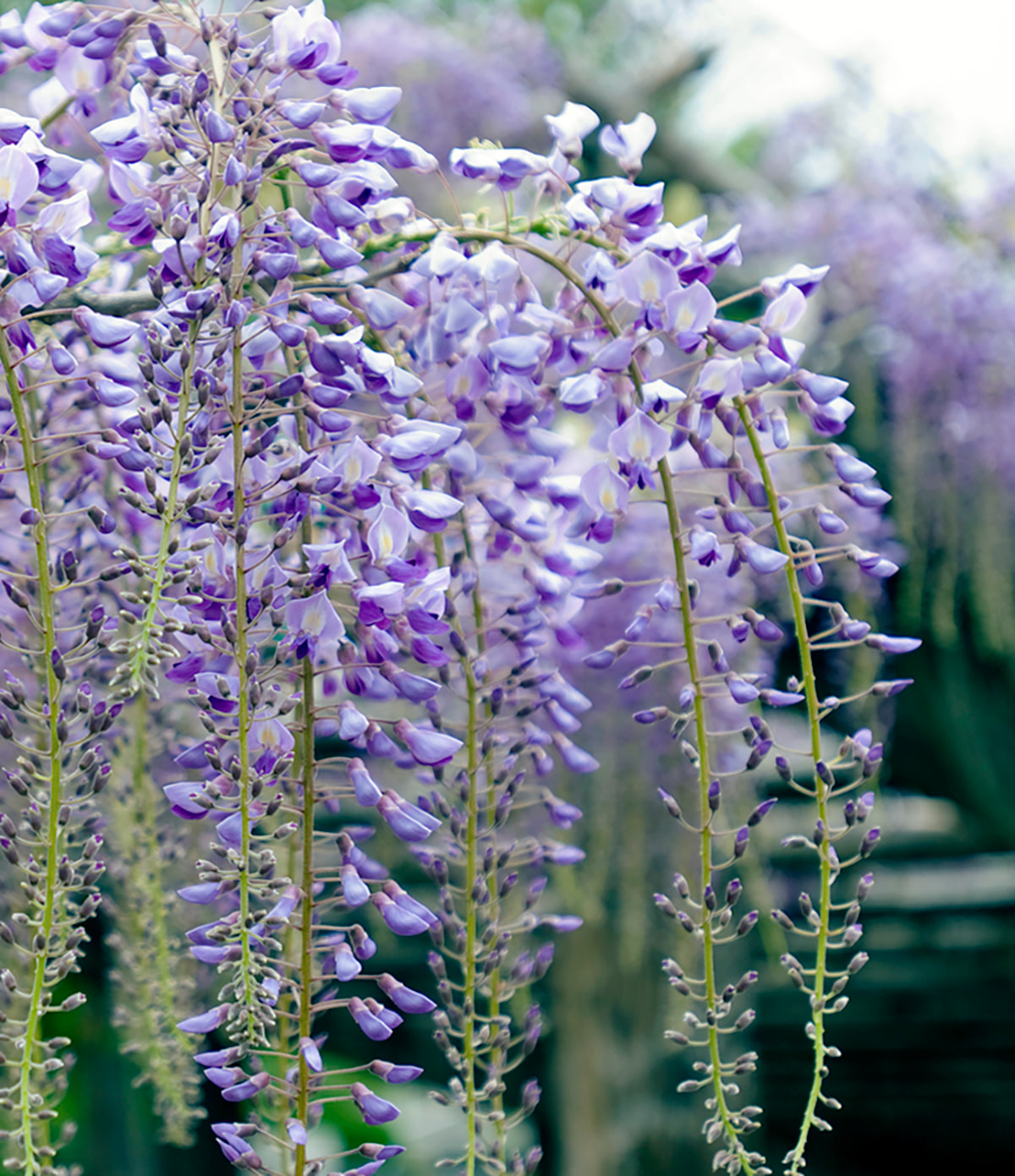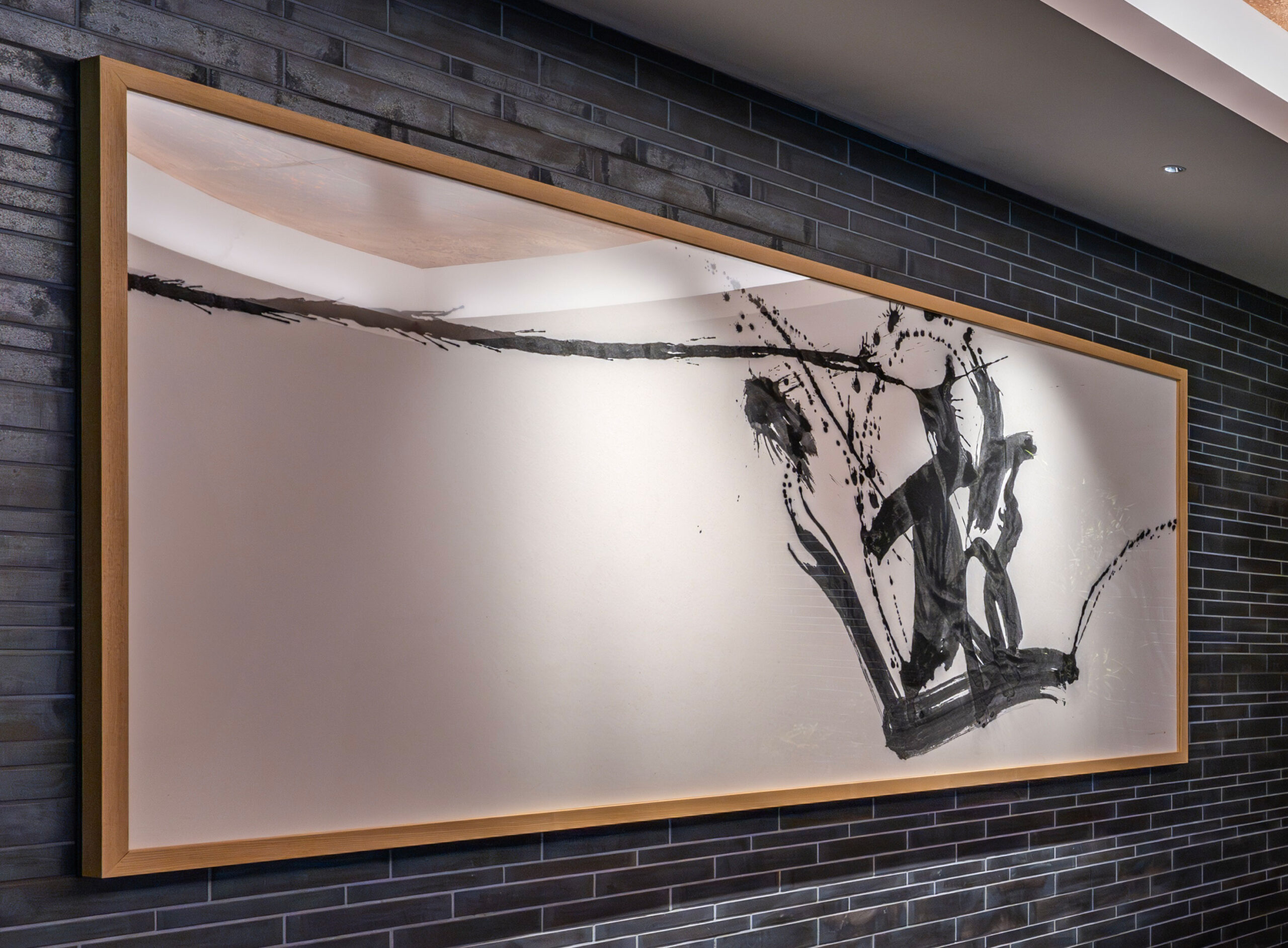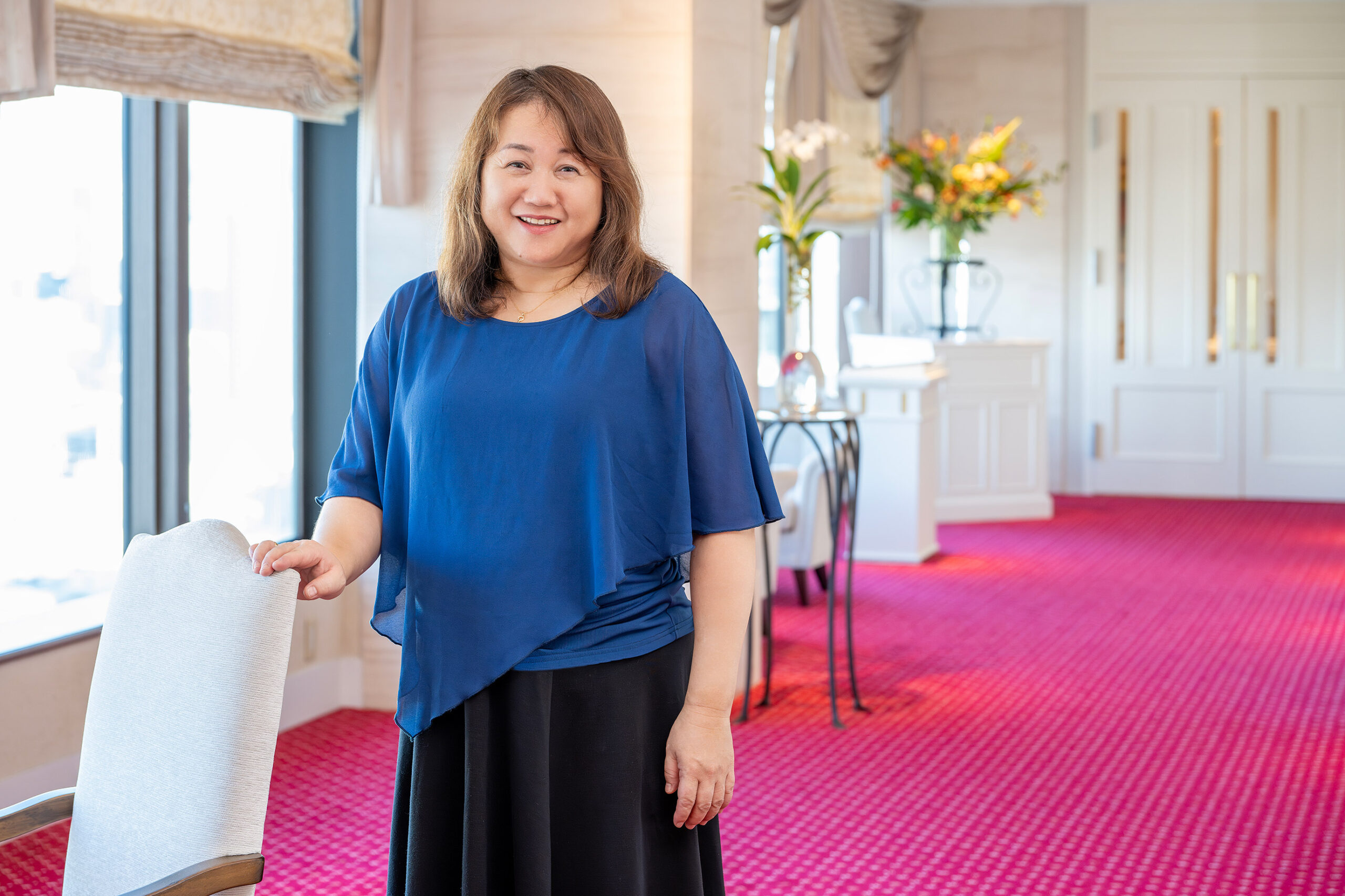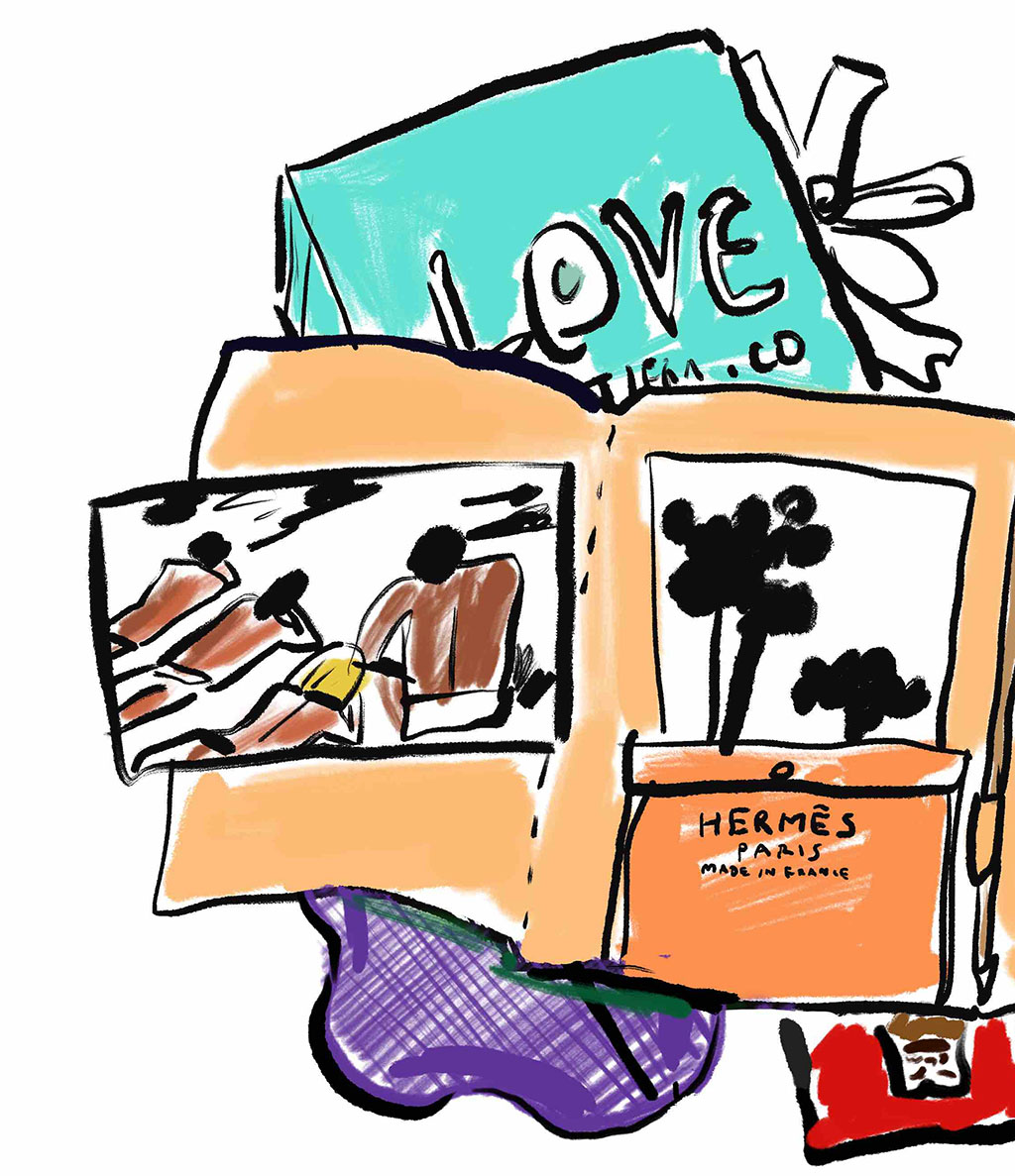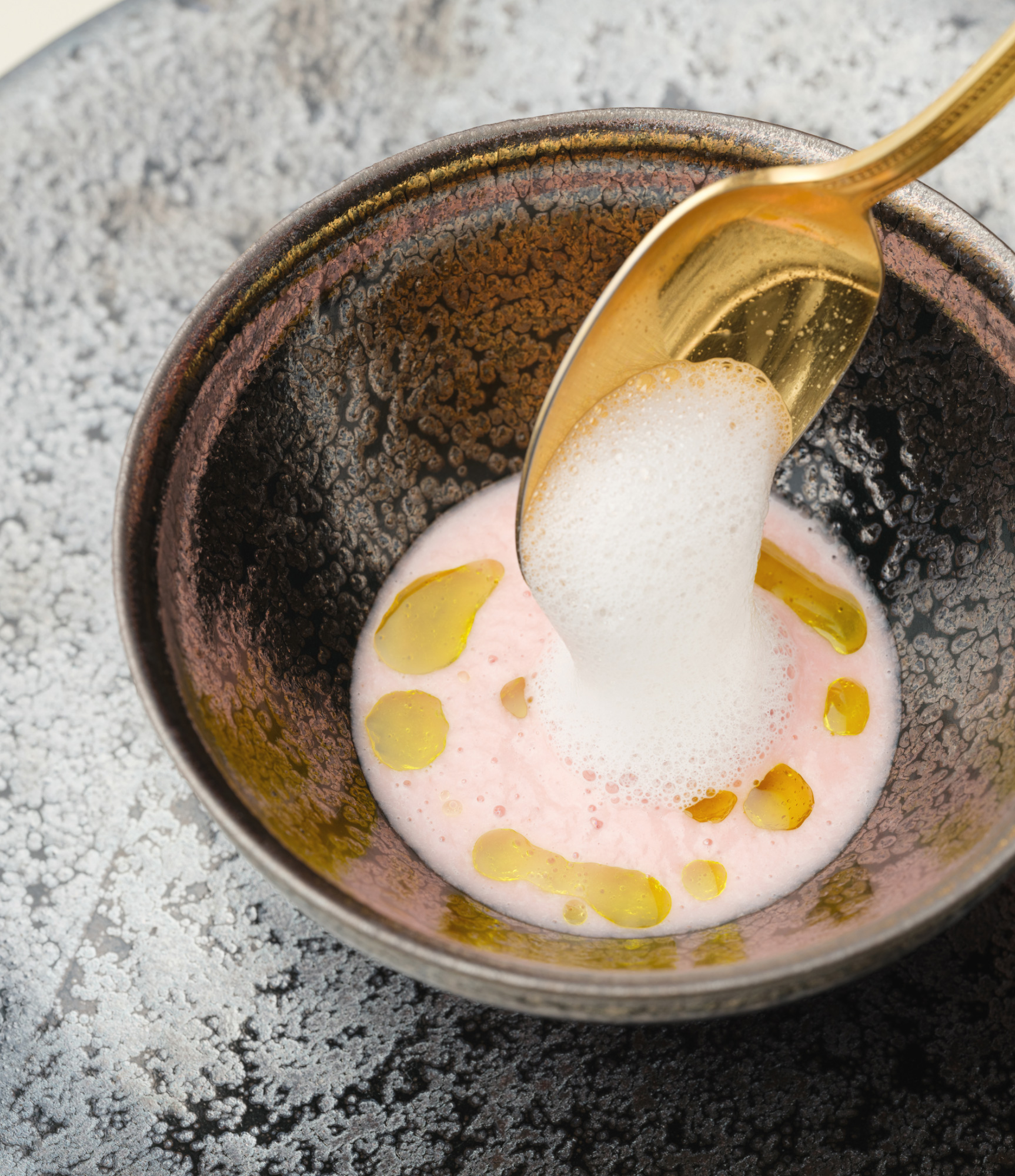
Mitaka, Tokyo–Kawasaki, Kanagawa
This article was originally published in the Spring 2022 issue of The ROYAL. All products, services, and prices are subject to change.
An Excursion from the RIHGA Royal Hotel Tokyo
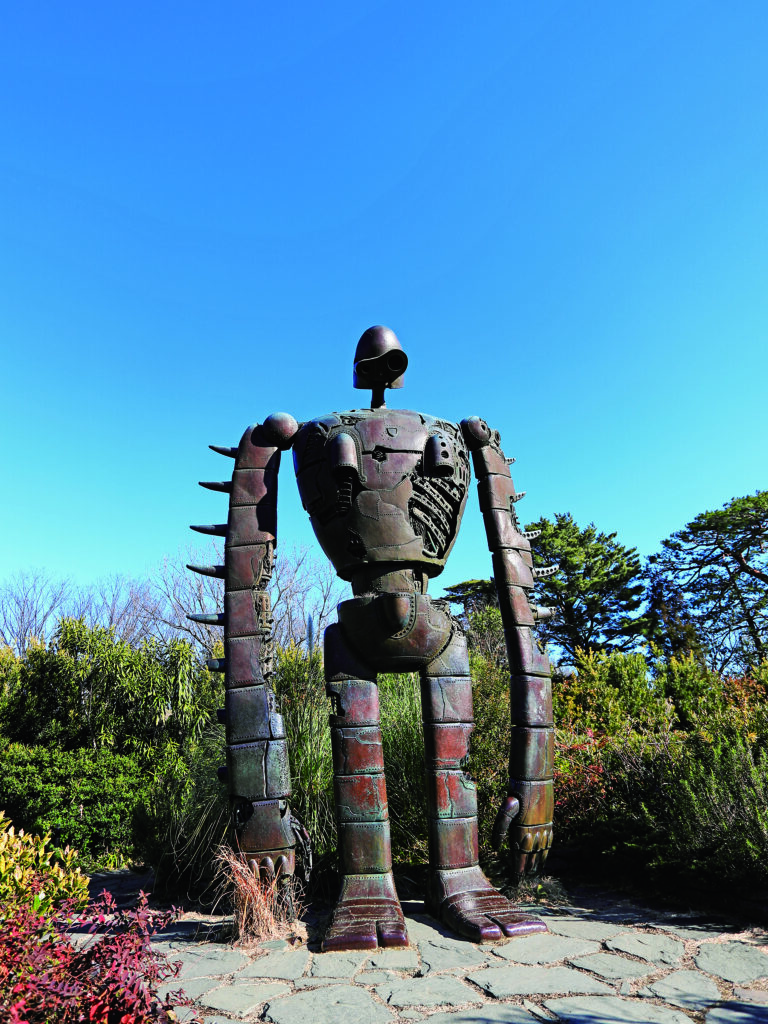
Ghibli Museum, Mitaka
The robot soldier stands on a rooftop with an abundance of greenery. It is regarded as the guardian of the Ghibli Museum, Mitaka, with its powerful stance.
Anime and manga are cultures that Japan is proud to share with the rest of the world. In Japan, there are numerous locations where you can immerse yourself in the world of anime and manga. Let’s go on an “anime pilgrimage” with Kobayashi Wataru, an editor and writer living in Tokyo.
Text/Photography by Kobayashi Wataru
(Except for the photos of Ikuta Ryokuchi Park)
Animation is the Fruit of a Massive Amount of Work and Creativity.

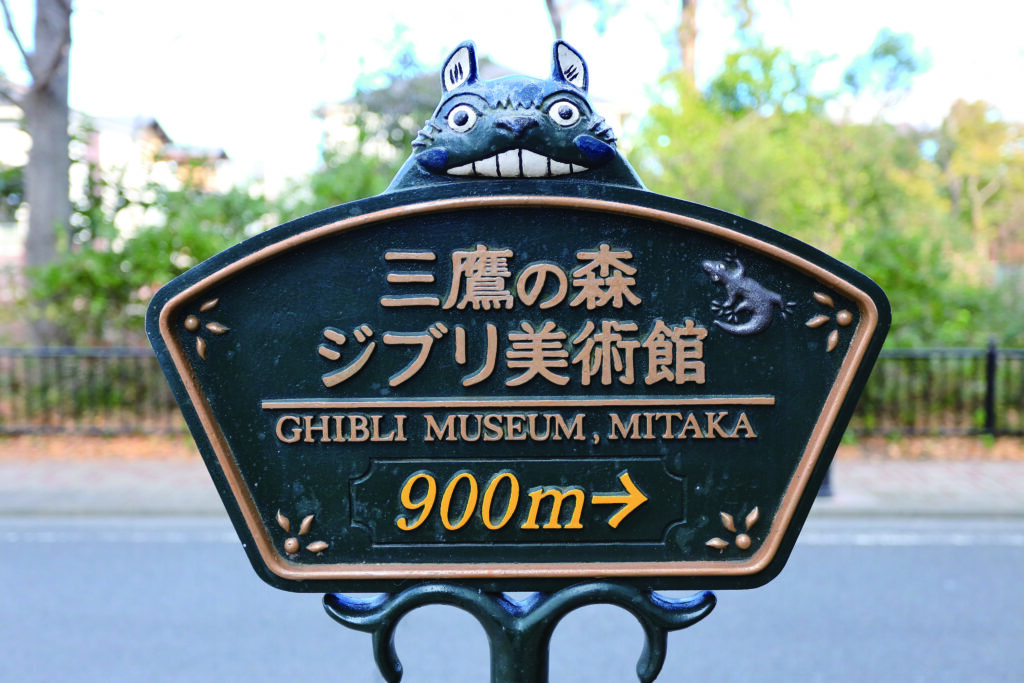
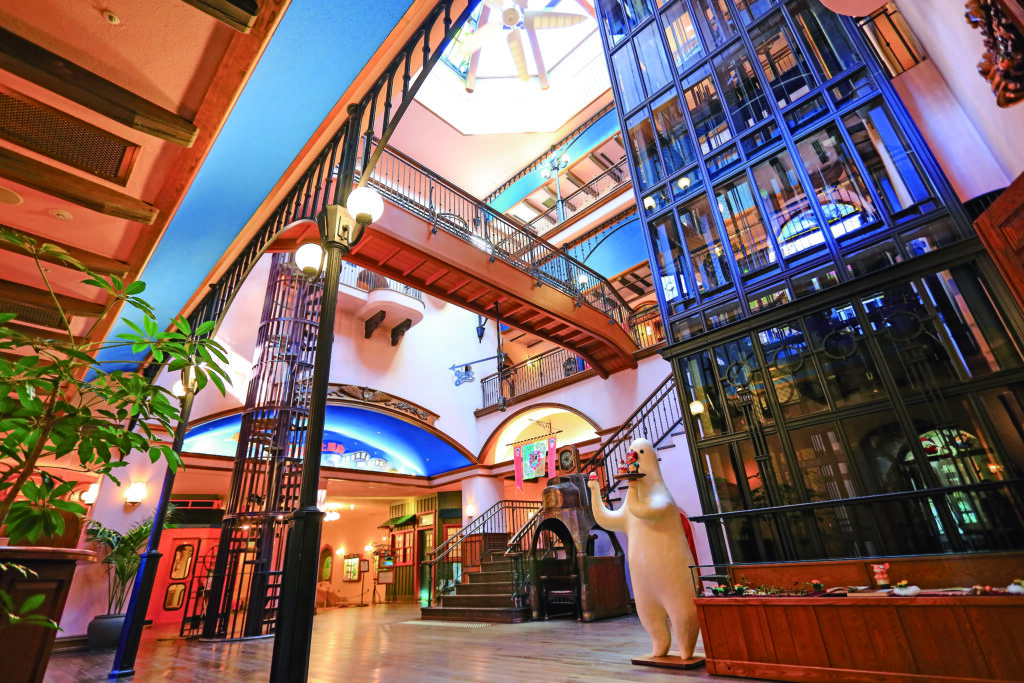
My cousin Ryo had perfectly memorized all the lines from the movie “Nausicaä of the Valley of the Wind,” produced by Studio Ghibli. When I was a child, my parents did not take me to the movies or let me watch any videos, so when I saw “Nausicaä of the Valley of the Wind” broadcasted on TV, I was truly surprised to hear the same exact lines I had heard from my cousin. This was my first encounter with Ghibli.
As a child, I drew a lot, so I remember being in awe when I heard that “Anime requires 24 frames per second.” I thought it was hard enough to draw even one picture.

The permanent exhibition “Where a Film is Born” consists of five small rooms. You can see drawings and pencils lying around on the desk, as if filmmaking is about to begin at any moment.
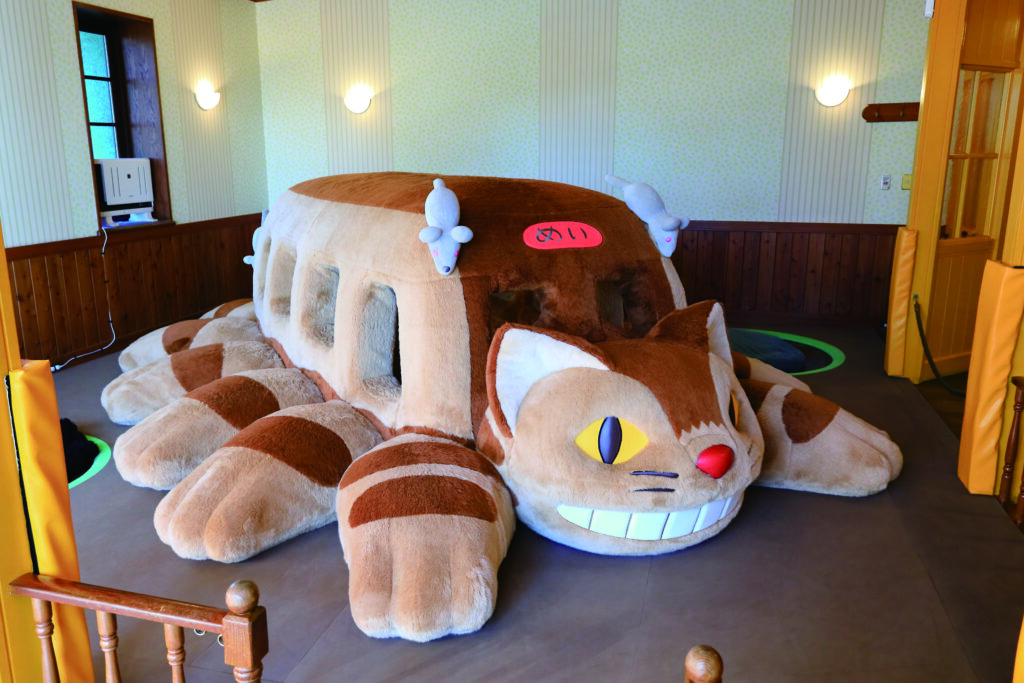
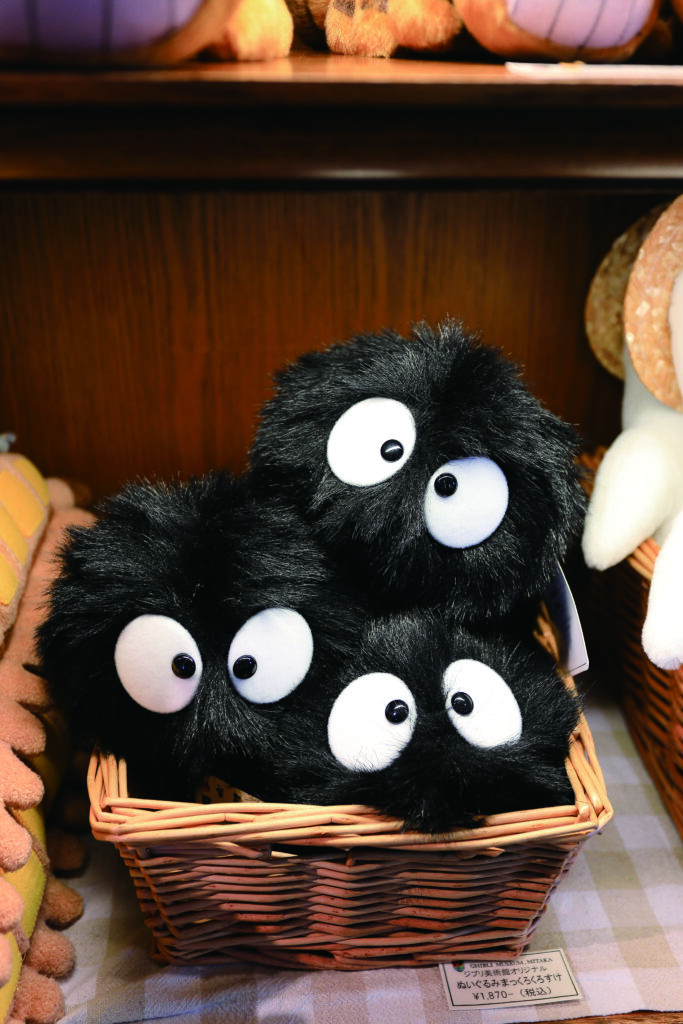
At every corner, you will be greeted by popular characters from Ghibli.
Today’s journey begins at the Ghibli Museum, Mitaka, a leader in the Japanese animation world. The permanent exhibition room, “Where a Film is Born,” displays the frighteningly massive amount of work that goes into a film and provides a glimpse into the world of Studio Ghibli. The exhibit is designed to cater to people of all ages, allowing them to enjoy it in their own unique ways. In particular, those who have a passion for illustrations and anime can explore the exhibit in more depth, and I also found myself captivated by it. It really made me want to take a peek into the mind of the honorary curator, Miyazaki Hayao. For Miyazaki’s films, he decides on the cut, the length of it, the dialogue, etc., of almost every scene and draws storyboards himself. The animators then draw each frame based on those storyboards, so there is no contingency in his films, unlike live-action films. In other words, his films are completed in his mind before production begins. As somebody who also works in a creative field, I feel dizzy thinking about how creative someone has to be to do such a thing, but I see infinite possibilities in mankind. Now, let’s move on to our next stop.
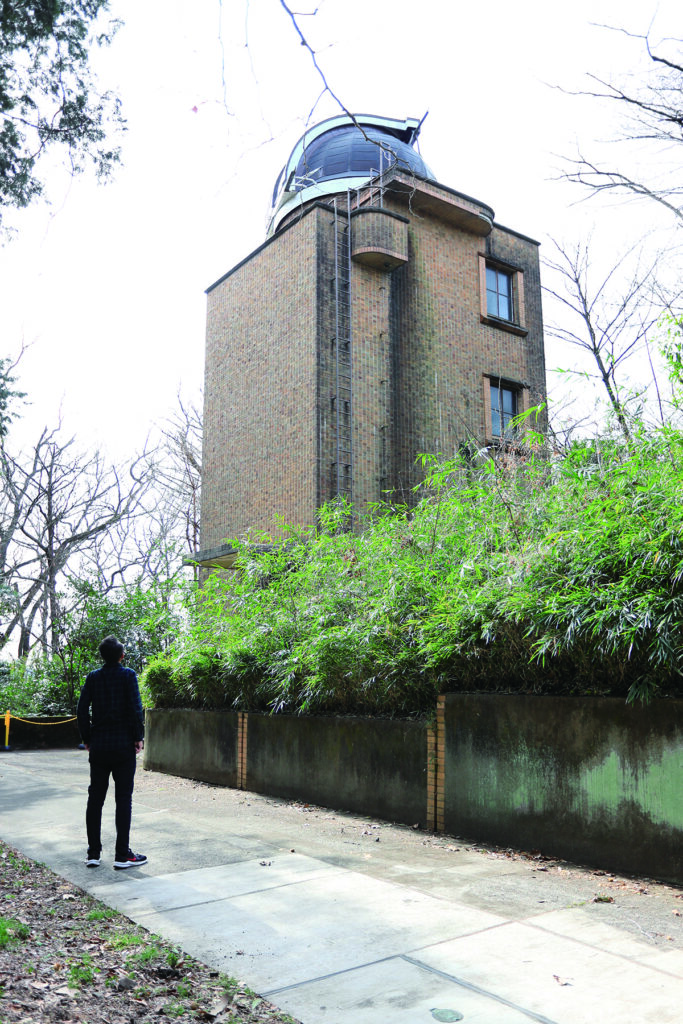
The National Astronomical Observatory of Japan
The National Astronomical Observatory of Japan promotes Japanese astronomy research and regularly holds events and tours of the facility.
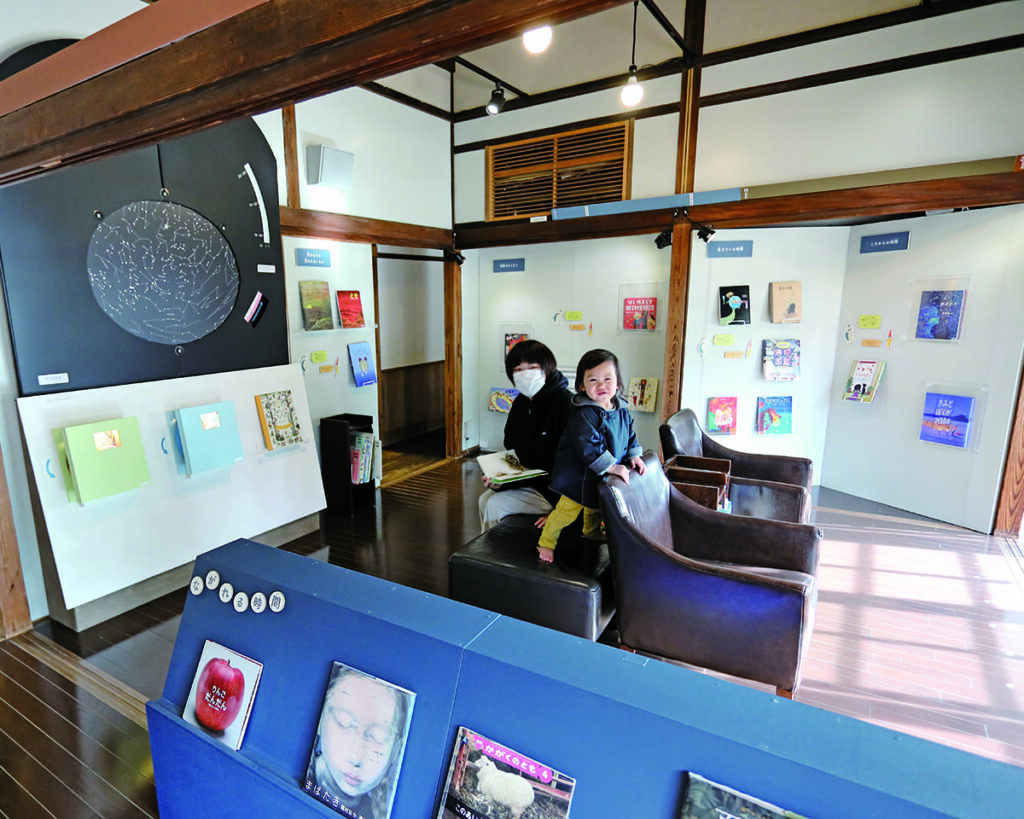
Mitaka Picture Book House in the Astronomical Observatory Forest
Mitaka Picture Book House in the Astronomical Observatory Forest, operated by Mitaka City in cooperation with the National Astronomical Observatory of Japan, is located on the premises of the National Astronomical Observatory of Japan and exhibits picture books. Relocating and restoring an ex-official residence of higher civil servants that had been used since the Taisho era, it opened in 2009. It nurtures children’s intellectual curiosity through picture books and various activities offered throughout its vast grounds.
Passing through the impressive, massive gate of the National Astronomical Observatory of Japan located in Musashino Forest, we are entering the “Mitaka Picture Book House in the Astronomical Observatory Forest.” Inside the wooden one-story building, which was once used as the observatory’s first official residence, is a spacious Japanese-style room with a lot of picture books and toys that children would love. There is also a hand-dug well in the garden, where parents and children can spend their time as they please. If you wish to tour the observatory grounds, you have to sign in at the guard’s office. There are three observation domes in total, including the first equatorial chamber, which was built about 100 years ago. They will definitely increase your fascination with the universe.
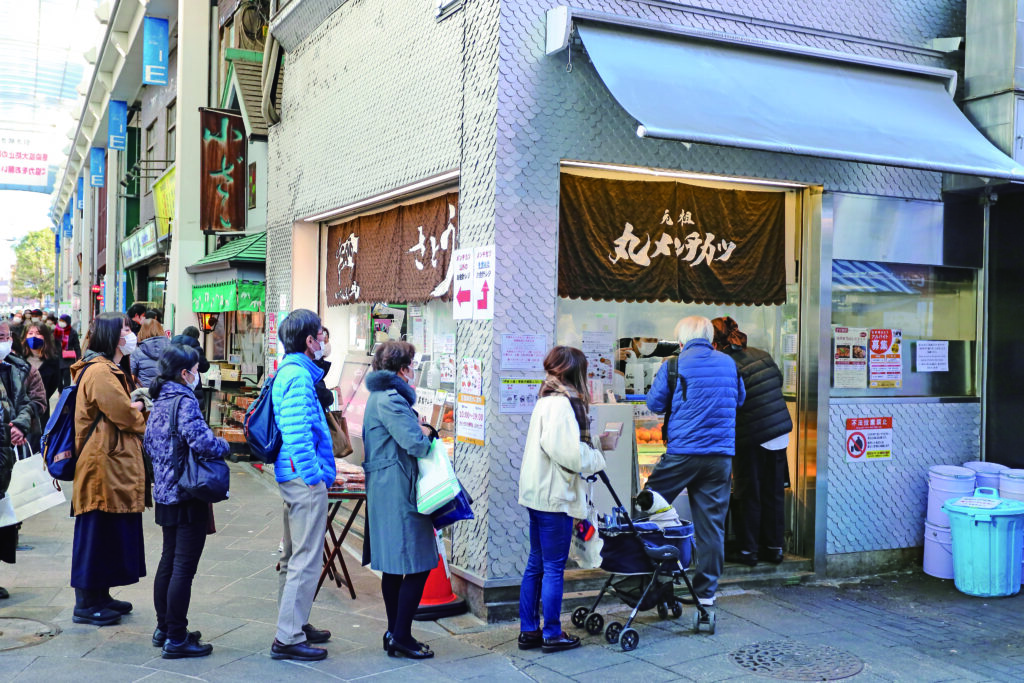
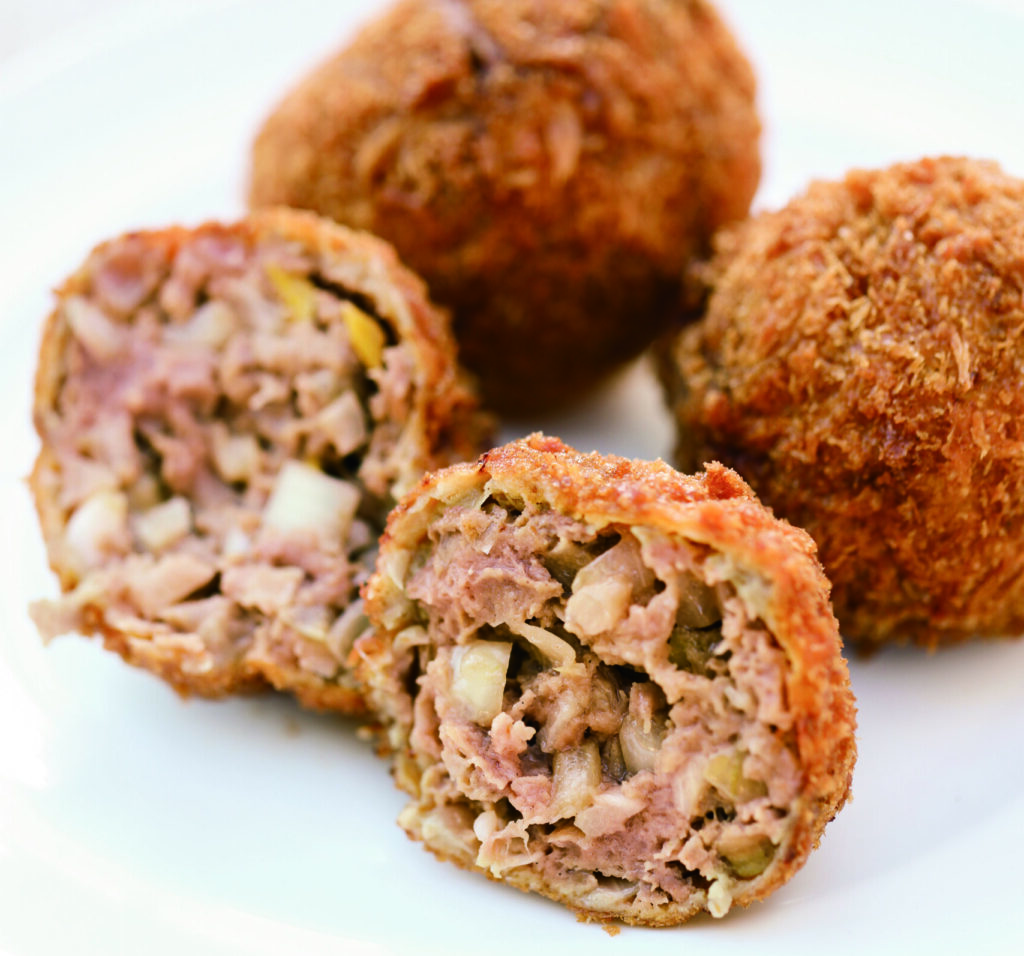
Kichijoji Satou
Kichijoji Satou, a butcher shop that has been in business in Kichijoji since 1974, is famous for its “Menchi Katsu.” They are made with all domestically produced ingredients, full of meat, and sold for¥250 each. They used to be oval, but they started to deep-fry them into balls once they got too busy to create oval shapes. It is one of Kichijoji’s famous foods, and people line up to get one both on weekdays and holidays.
Now, we are taking a bus to Kichijoji and strolling around the shopping street in front of the station. There is a long line in front of “Kichijoji Satou.” Let’s get in line and enjoy their popular “Menchi Katsu.” Yes, it is very delicious! This is such a fulfilling day.
【DATA】
Ghibli Museum, Mitaka
1-1-83 Shimorenjaku, Mitaka, Tokyo
Phone: +81(0) 570-055-777
10:00~18:00
Reservation Required
Closed: Tuesdays and the year-end and new-year holidays (and other irregular days for an extended period)
Admission:
Adults and College Students ¥1,000
High School Students and Junior High School Students ¥700
Elementary School Students ¥400
Children ¥100
Free admission for children aged 4 or younger
Mitaka Picture Book House in the Astronomical Observatory Forest
2-21-3 Osawa, Mitaka, Tokyo
Phone: +81(0) 422-39-3401
10:00〜17:00 ※Currently no admission from 12:00 to14:00
Closed: Tuesdays and the year-end and new-year holidays (and other irregular days due to maintenance)
Free Admission
Kichijoji Satou
1-1-8, Kichijoji Honcho, Musashino, Tokyo
Phone: +81(0) 422-22-3130
10:00~19:00 (Menchi Katsu available from 10:30)
Closed: New-year holidays
Ikuta, Home of the Creator of Doraemon
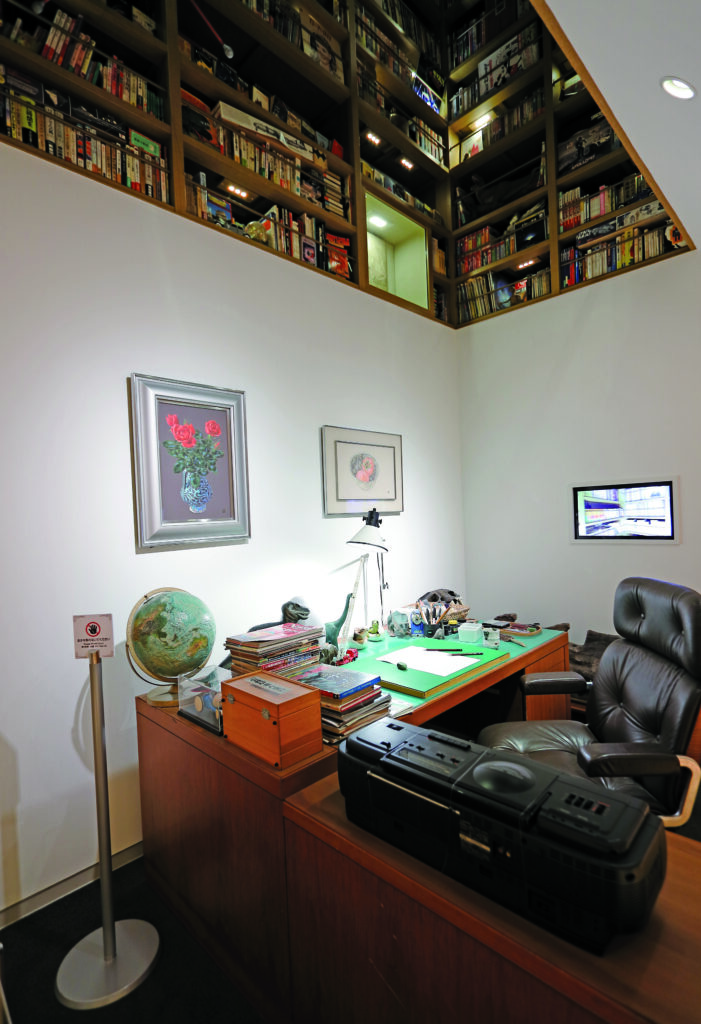
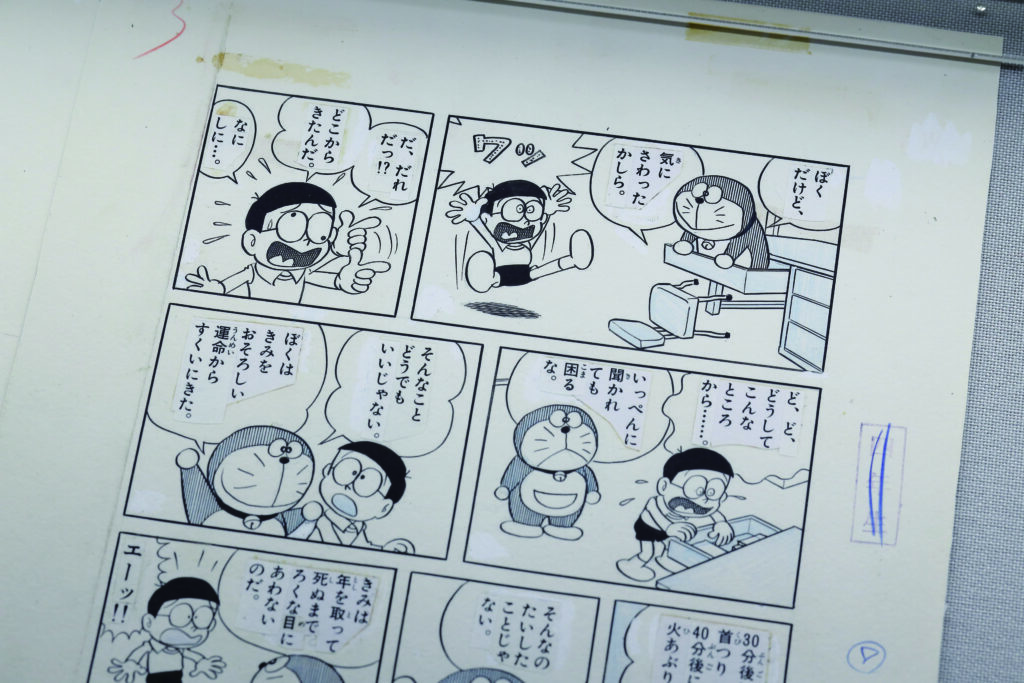
Fujiko・F・Fujio Museum, in Kawasaki-city
“Fujiko・F・Fujio Museum, in Kawasaki-city” houses approximately 50,000 original manga drawings by Fujiko・F・Fujio, including the ones from “Doraemon.” They also have the desk that Fujiko・F・Fujio loved to work on. (left) Visitors can also see original drawings and other valuable materials that cannot be seen anywhere else. (right)
Fujimoto Hiroshi, a.k.a. Fujiko・F・Fujio, lived in Ikuta, Kawasaki from 1961, and he commuted to his studio in Shinjuku by train every day. As a tribute to his connection to the area, the “Fujiko・F・Fujio Museum, in Kawasaki-city” opened here in Kawasaki.
As I walked around the museum, I noticed that there were some “hidden surprises” that would excite the fans of Fujiko・F・Fujio. You can find them everywhere, from the wall decorations and warning signs to the video played in the F Theater. I won’t go into the details now so that you can see for yourself.
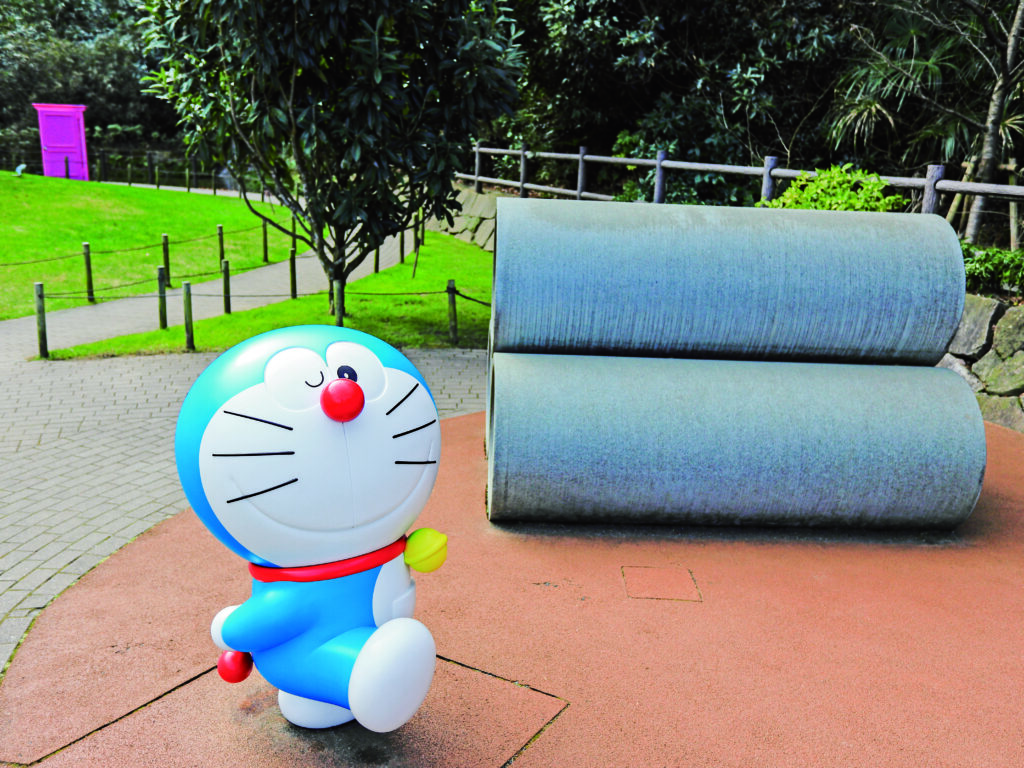
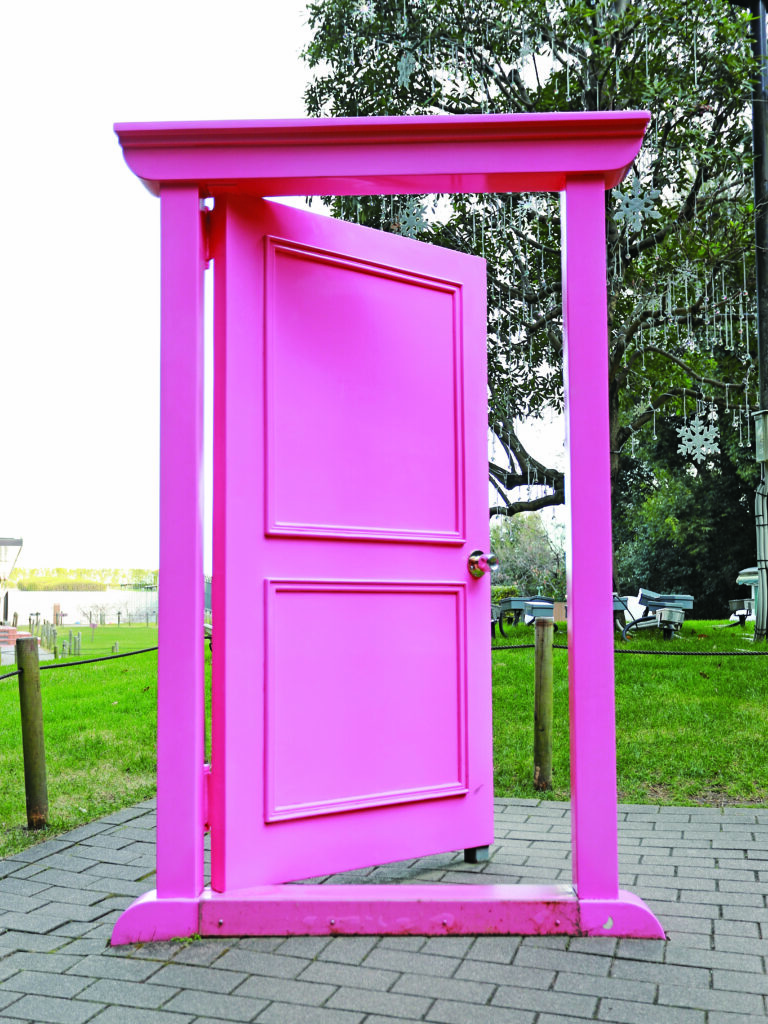
On the rooftop, where you can overlook the Ikuta Ryokuchi Park, you can find some photo spots such as the “Anywhere Door” and the “Clay Pipe” from “Doraemon.”
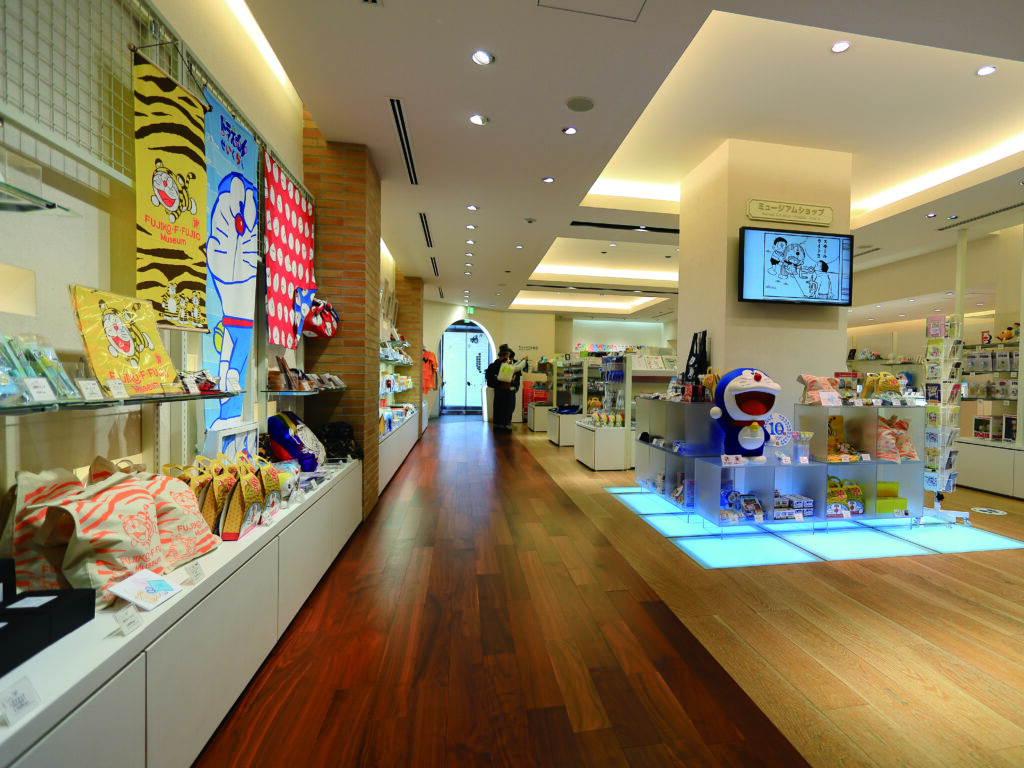
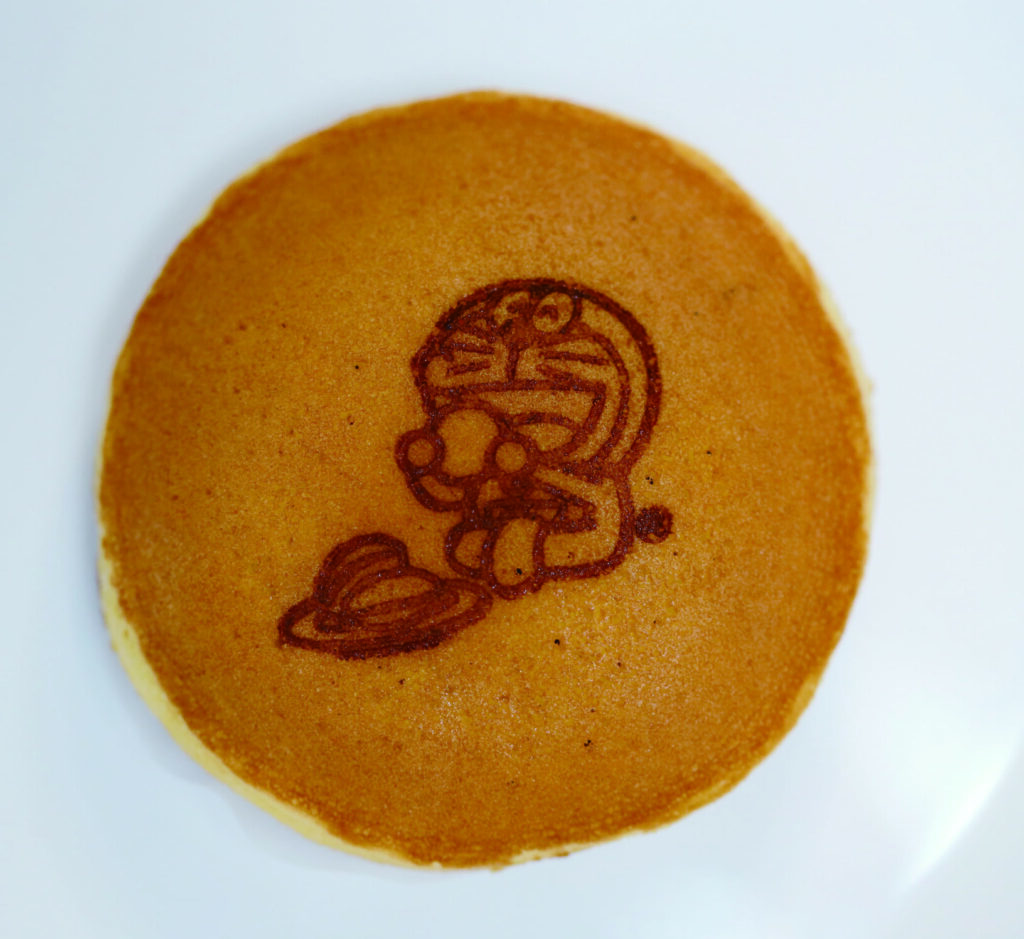
ⒸFujiko-Pro
The popular “Doraemon” branded “Dorayaki” are ¥240/piece. (¥1,560/a box of 6).
Stepping onto the rooftop, we will see the “Anywhere Door” standing in the midst of nature that belongs to the adjacent “Ikuta Ryokuchi Park.” Let’s walk to the Ikuta Ryokuchi East Exit Visitor Center next.

Ikuta Ryokuchi Park
Ikuta Ryokuchi Park is the largest urban park in Kawasaki, which underwent urban planning in 1941. The park features the nature of the Tama Kyuryo and the Ikuta Chojaana Yokoanabogun (ancient burial site) from the 7th century. The park is also home to the ruins of a castle said to have been built by Inage Saburo Shigenari, a Samurai-Daisho who served Minamoto no Yoritomo during the Kamakura period.

Mt. Masugata is known for its cherry blossoms.
After walking up a little mountain path for about 10 minutes, we will be greeted by the cherry blossoms of Mt. Masugata in full bloom. Actually, more than 20 years ago, I was a student at the university located behind this park, and the club I belonged to used to come to Ikuta Ryokuchi Park for cherry blossom viewing parties. Remembering those days, I went to Mukogaoka-Yuen Station, the nearest station to my university, for the first time in a while.
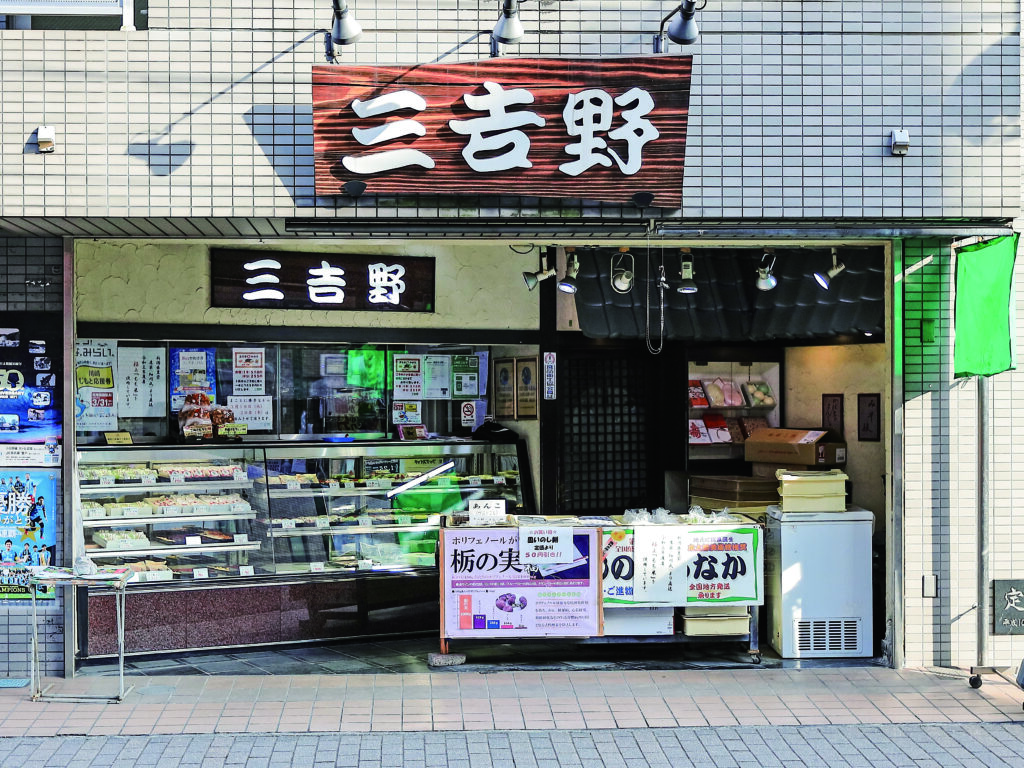
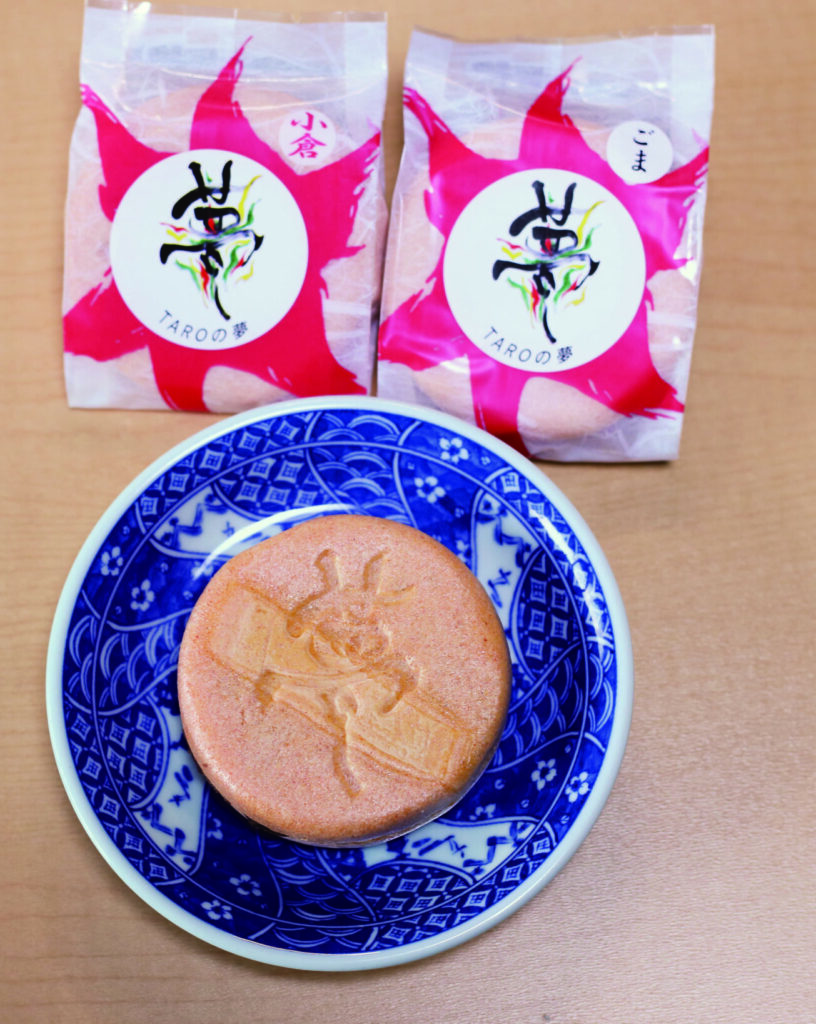
Miyoshino
Miyoshino is a Japanese confectionery shop that has been in business for 51 years in Mukogaoka-Yuen. The founder is from Niigata, and all of their Wagashi are made with glutinous rice from Niigata Prefecture and are additive-free. The red bean paste tastes superb and is not too sweet. The shop is open until 6:30 a.m. and is loved by the locals. The photo on the right shows “TARO’s Dream,” a confection created in collaboration with other confectionary shops to commemorate the opening of the “Taro Okamoto Museum of Art, Kawasaki” in the Ikuta Ryokuchi Park. Inspired by Okamoto Taro’s famous quote, “Art is an explosion!”, the confection contains chili peppers in the Monaka (Japanese wafer), creating a perfect balance of spiciness and sweetness. ¥170/piece (Ogura-an・Sesame-an).
Although much has changed in front of the station, the Japanese confectionery shop “Miyoshino” hasn’t changed a bit. The second-generation owner told me how the town has changed since I graduated, and it brought back so many fond memories. The taste of the Wagashi (traditional Japanese sweets), of which I had unintentionally bought too many, tasted both sweet and a little bittersweet, like my memories.
【DATA】
Fujiko・F・Fujio Museum, in Kawasaki-city
2-8-1, Nagao, Tama-ku, Kawasaki, Kanagawa
Phone: +81(0) 570-055-245 (9:30~16:00)
Opening Hours:10:00~18:00
Reservation Required
Closed: Tuesdays and the year-end and new-year holidays (and other irregular days)
Admission:
Adults and College Students ¥1,000
High School Students and Junior High School Students ¥700
Children aged 4 and older ¥500
Ikuta Ryokuchi Park
Ikuta Ryokuchi East Exit Visitor Center
7-1-4, Masugata, Tama-ku, Kawasaki, Kanagawa
Phone: +81(0) 44-933-2300
8:30~17:00
Free Admission
Closed: The year-end and new-year holidays
Miyoshino
2701-1, Noborito, Tama-ku, Kawasaki, Kanagawa
Phone: +81(0) 44-922-5274
6:30~19:00
Closed: Thursdays and the year-end and new-year holidays
Our Guide
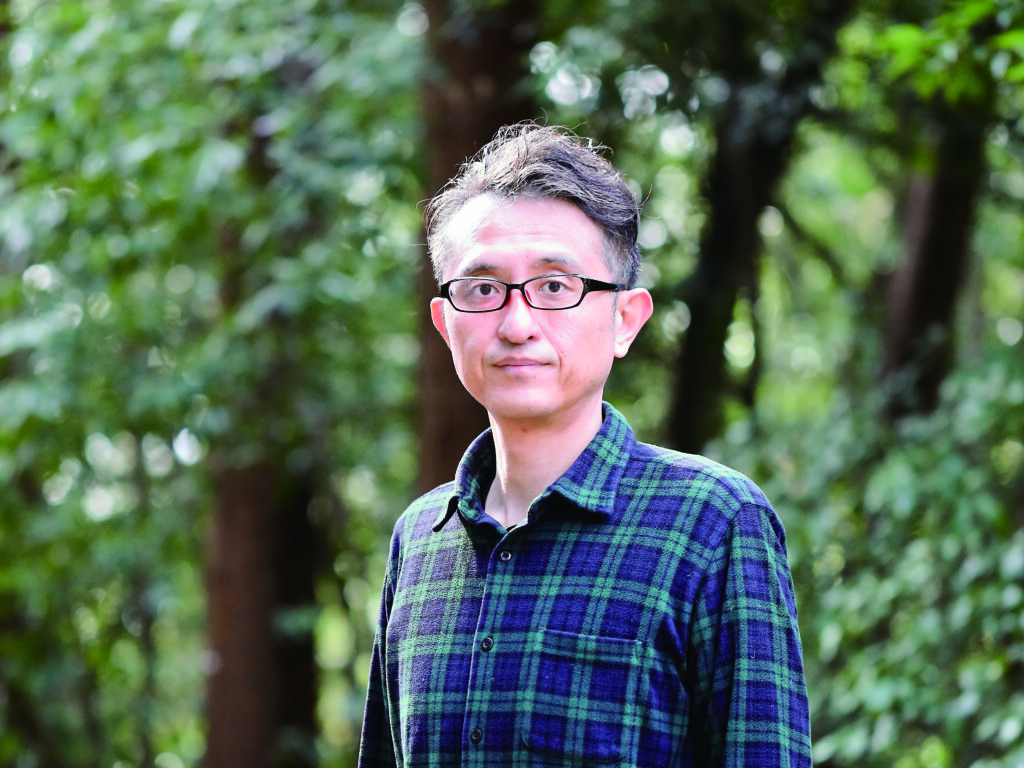
Kobayashi Wataru
Kobayashi Wataru is an editor from Minowa, Nagano. After graduating from Senshu University, he worked at Nihonsakari and Doremi Music Publishing before starting his own company, AISA, in 2004. In 2017, Kobayashi won the Grand Prize and Readers Prize at the “Soccer Book Awards” with “Jibun wo hiraku gijutsu,” written by Ito Dan. He also serves as an advisor of Fuchu for NPOs and social businesses.


